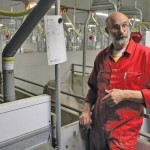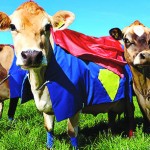Some have described the Netherlands as a living laboratory for sustainable intensive livestock production. With 16.7 million people living with 11 million hogs, 80 million chickens and 400,000 cows in an area that is one-fifteenth the size of Manitoba, it is impossible for the animal industry to operate below the public’s radar. Growing public distaste






